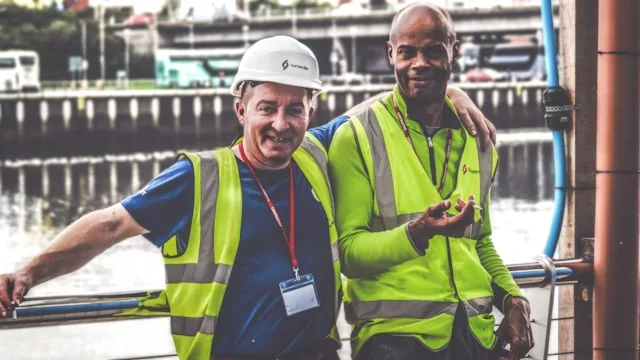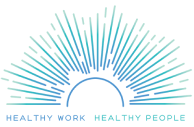Definitions of “essential workers” vary, but typically include health care workers, first responders (firefighters, EMTs, police), food manufacturing and agricultural workers, grocery workers, and transportation workers. Their jobs can not be performed at home and require face-to-face contact with the public or working in close proximity to coworkers. Due to health inequities, less access to health care, and lower socioeconomic status, essential workers are therefore at higher risk for both exposure to the virus SARS-CoV2 and to worse infection outcomes compared to the general population.
The JOEM editorial discusses the greater risks of COVID-19 for essential workers, many of whom are also workers of color, immigrants, and may live in multi-generational households. African-American and Latinx workers, hit hard by the pandemic, are more likely to work in lower-wage essential jobs, such as grocery work, meatpacking, and agricultural work, which have experienced large workplace outbreaks.
Many essential workers are more frequently exposed to work stressors, such as high job demands, low job control, effort-reward imbalance, organizational injustice, bullying, work-family conflict and long work hours. Research has shown that having these job stressors can result in chronic stress which changes the physiology of the body over time, leading to mental health problems, such as burnout and depression, as well as higher risk of obesity, high blood pressure, diabetes, and heart disease. These chronic conditions or illnesses are often called “comorbidities,” as they put someone already ill, for example with COVID-19, at higher risk for severe symptoms and increased risk of death.
While in many jobs, unhealthy working conditions pre-existed this pandemic, working conditions have worsened for many essential workers. The pandemic has caused much uncertainty, anxiety, and stress, touching on nearly every aspect of our lives. Work stressors such as unemployment, underemployment, increased workloads, reduced social support, difficulty attending to personal and family needs, and a blurring of the lines between work and family life have been heightened during this pandemic. For example, those working in grocery stores must deal with longer lines of customers, and some of those customers do not follow social distancing or wear proper PPE. Those who are working in meatpacking factories (locations of major outbreaks) have poor health and safety conditions and lack supportive managers, while health care workers must deal with overwhelming patient numbers during extreme COVID-19 surges. Stress can also weaken the immune system and increase inflammatory cytokines which have been linked to more severe outcomes of COVID-19.
Making work healthier matters now more than ever. Unhealthy working conditions may be the current reality, but there are many workers, worker advocacy groups, and labor unions fighting to protect the health and safety of essential workers, especially during this pandemic. To find examples of what some groups have accomplished, visit the Healthy Work Campaign’s “Healthy Work Strategies” page, which now features a section on “Reducing COVID-19-related work stressors.”
Visit HealthyWork.org for more info about the campaign and how to make a difference right where you are. You can also find the team and editorial authors, Pouran Faghri, Marnie Dobson, Paul Landsbergis and Peter Schnall on Twitter, Facebook, LinkedIn, and MailChimp for comments.






